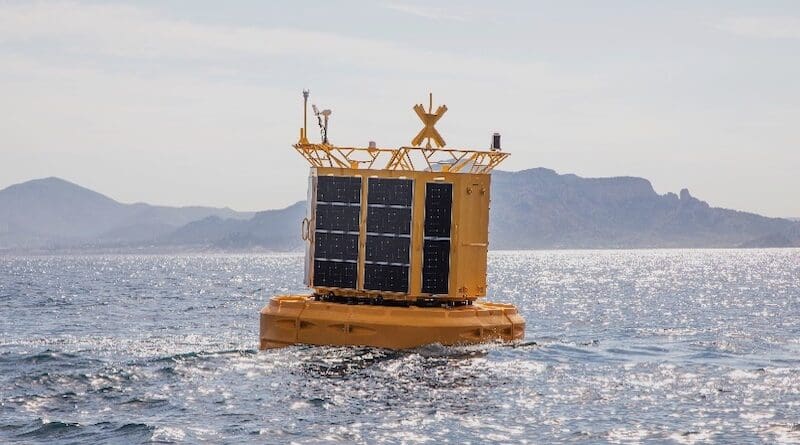The HOPE Project: Smart Buoy For Studying Carbon Sequestration Capacity Of Tropical Oceans
Funded through the European ERC Consolidator grant scheme and led by Sophie Bonnet, Research Director at French National Research Institute for Sustainable Development (IRD), the HOPE project is aimed at studying the CO2 sequestration capacity of tropical oceans.
On March 2, 2024, a state-of-the-art smart buoy measuring five meters in diameter, fitted with innovative sensors that communicate with each other and with land, will be deployed in the South Pacific, off the coast of New Caledonia. This instrument will allow sampling of both the surface and deep ocean simultaneously every four hours for four years, and will transmit data (biodiversity, chemistry, physics) in real time to oceanographers on land. This technological breakthrough in oceanography will open up new horizons in our understanding of ocean-climate links.
Tropical and subtropical oceans cover ~60% of the world’s ocean surface. Until recently, these oceans were considered to be poor CO2 traps, as they are nutrient-poor zones. However, these vast regions harbor a particular type of plankton known as a “diazotroph”, which fertilizes the ocean surface with nutrients. These microorganisms boost the marine food chain and CO2 sequestration through an alternative biological carbon pump, the significance of which was highlighted in a recent IRD study.
How strong is this alternative carbon pump? Could these marine microorganisms absorb more CO2 than previously thought? And, thus, help mitigate climate change? This is what the HOPE project “How do diazotrophs shape the ocean biological carbon pump?” will explore over the next 4 years, combining techniques at the interface between microbial oceanography, geochemistry and autonomous sensor technology, with the use of the smart profiling buoy.
Today’s oceans are becoming “tropicalized”, and the role of this alternative pump could become crucial in the oceans of the future. As such, the results from the HOPE project could adjust the climate models used by the IPCC (Intergovernmental Panel on Climate Change) experts, and shape the ocean of tomorrow.
The buoy will be assembled between February 22 and 29 at the Quai des Scientifiques in Nouméa, New Caledonia.
Its deployment into the ocean is scheduled on March 2 off the Aboré reef in New Caledonia, using three oceanographic vessels: the Cyathea (a SORASORECAL tug), assisted by the Antéa (a French Oceanographic Fleet vessel operated by Ifremer) and the Archamia (an IRD vessel).

